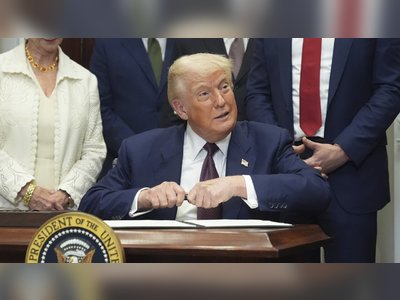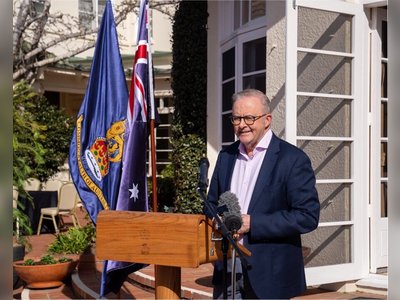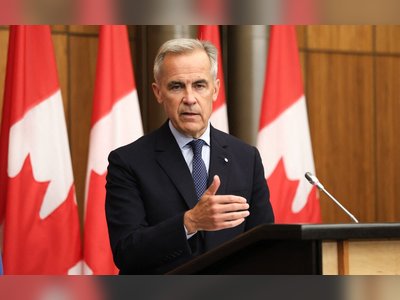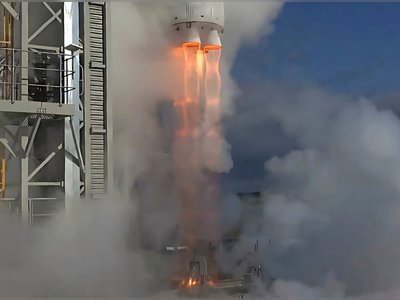
Australia Faces Economic Pressures Amid Global Challenges
Australia's economy grapples with inflation, supply chain issues, and international trade dynamics.
Australia's economy is currently navigating a complex landscape marked by rising inflation, disruptions in supply chains, and shifting international trade relationships.
In recent months, the inflation rate has reached its highest levels in over two decades, currently hovering around 6.1%, significantly impacting consumer prices across various sectors, including groceries, energy, and housing.
The Reserve Bank of Australia has responded by implementing a series of interest rate hikes in an effort to curb inflation and stabilize the economy.
These measures have raised the official cash rate to 3.85%, the highest it has been since 2012.
The ongoing fallout from global supply chain disruptions, exacerbated by the COVID-19 pandemic, has continued to affect Australia’s trade.
Increased shipping costs and delays have led to shortages of essential goods, impacting not only retailers but also manufacturers reliant on imports for production.
The Australian Bureau of Statistics reported that retail sales have shown mixed results, with some sectors, such as clothing and footwear, experiencing declines, while others, notably food sales, have seen minor increases.
Additionally, Australia's agricultural sector is grappling with challenges posed by changing climate conditions, which have affected crop yields and livestock production.
Recent floods have further compounded these issues, leading to crop damage and diminished supply, which in turn exacerbates the inflationary pressures on food prices.
On the trade front, Australia has been working to diversify its export markets, particularly in response to rising tensions with traditional trading partner China.
In recent months, Australia's government has sought to enhance trade agreements with countries in the Asia-Pacific region, with an emphasis on securing new markets for its agricultural and mineral products.
The geopolitical situation, particularly surrounding the United States and China, has also influenced Australia's foreign policy and economic strategies.
The Australian government remains focused on strengthening alliances, as seen with the AUKUS security pact with the US and the UK, which aims to enhance defense cooperation amid regional security challenges.
Overall, Australia faces a multifaceted economic environment as it works to address domestic pressures while navigating an evolving global landscape.
Key economic indicators remain under close observation, as policymakers continue to adapt to both international developments and local economic conditions.
In recent months, the inflation rate has reached its highest levels in over two decades, currently hovering around 6.1%, significantly impacting consumer prices across various sectors, including groceries, energy, and housing.
The Reserve Bank of Australia has responded by implementing a series of interest rate hikes in an effort to curb inflation and stabilize the economy.
These measures have raised the official cash rate to 3.85%, the highest it has been since 2012.
The ongoing fallout from global supply chain disruptions, exacerbated by the COVID-19 pandemic, has continued to affect Australia’s trade.
Increased shipping costs and delays have led to shortages of essential goods, impacting not only retailers but also manufacturers reliant on imports for production.
The Australian Bureau of Statistics reported that retail sales have shown mixed results, with some sectors, such as clothing and footwear, experiencing declines, while others, notably food sales, have seen minor increases.
Additionally, Australia's agricultural sector is grappling with challenges posed by changing climate conditions, which have affected crop yields and livestock production.
Recent floods have further compounded these issues, leading to crop damage and diminished supply, which in turn exacerbates the inflationary pressures on food prices.
On the trade front, Australia has been working to diversify its export markets, particularly in response to rising tensions with traditional trading partner China.
In recent months, Australia's government has sought to enhance trade agreements with countries in the Asia-Pacific region, with an emphasis on securing new markets for its agricultural and mineral products.
The geopolitical situation, particularly surrounding the United States and China, has also influenced Australia's foreign policy and economic strategies.
The Australian government remains focused on strengthening alliances, as seen with the AUKUS security pact with the US and the UK, which aims to enhance defense cooperation amid regional security challenges.
Overall, Australia faces a multifaceted economic environment as it works to address domestic pressures while navigating an evolving global landscape.
Key economic indicators remain under close observation, as policymakers continue to adapt to both international developments and local economic conditions.
AI Disclaimer: An advanced artificial intelligence (AI) system generated the content of this page on its own. This innovative technology conducts extensive research from a variety of reliable sources, performs rigorous fact-checking and verification, cleans up and balances biased or manipulated content, and presents a minimal factual summary that is just enough yet essential for you to function as an informed and educated citizen. Please keep in mind, however, that this system is an evolving technology, and as a result, the article may contain accidental inaccuracies or errors. We urge you to help us improve our site by reporting any inaccuracies you find using the "Contact Us" link at the bottom of this page. Your helpful feedback helps us improve our system and deliver more precise content. When you find an article of interest here, please look for the full and extensive coverage of this topic in traditional news sources, as they are written by professional journalists that we try to support, not replace. We appreciate your understanding and assistance.










